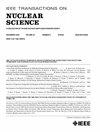了解地面辐射源对量子器件错误率的贡献
IF 1.9
3区 工程技术
Q3 ENGINEERING, ELECTRICAL & ELECTRONIC
引用次数: 0
摘要
尽管量子计算(QC)是一种非常有前途的计算范式,但它具有令人难以置信的高辐射灵敏度。最近的发现强调,与传统的CMOS器件相比,量子比特(qubit)中粒子的撞击诱发故障的可能性要高出数万倍。此外,沉积的电荷在衬底中迅速扩散,影响多个量子位,引发可能持续数百秒的故障。在本文中,我们旨在更好地了解不同辐射源和能量传播机制对量子器件的影响。我们展示了超过180亿个粒子相互作用的模拟数据。通过GEANT4模拟,我们比较了中子、α粒子、μ子和伽马射线在量子器件中的影响。我们结合非平衡产生概率和自然通量来确定量子比特最有害的辐射源。我们发现,到目前为止,介子更有可能导致量子比特出现故障。此外,通过G4CMP模拟,我们跟踪了能量在衬底中的传播。我们表明,即使粒子在远离量子位的地方撞击也会导致能量传输到超导体,并指出这种机制比在量子位上直接沉积能量的可能性高1000倍。此外,我们证明了衬底中二次粒子的时间持久性在$100~\mu $ s的数量级。最后,我们观察了粒子对四量子位器件的影响,以表明在常见布局下,多量子位可能被破坏。本文章由计算机程序翻译,如有差异,请以英文原文为准。
Understanding the Contributions of Terrestrial Radiation Sources to Error Rates in Quantum Devices
Quantum computing (QC), despite being a highly promising computational paradigm, suffers from an incredibly high radiation sensitivity. Recent discoveries highlighted that the impact of a particle in the quantum bit (qubit) is tens of thousands of times more likely to induce a fault compared to traditional CMOS devices. Moreover, the deposited charge quickly diffuses in the substrate affecting multiple qubits, inducing faults that can persist for hundreds of seconds. In this article, we aim to better understand the effect of different radiation sources and mechanisms of energy propagation on quantum devices. We present data from the simulation of more than 18 billion particle interactions. Through GEANT4 simulations, we compare the effect of neutrons, alpha particles, muons, and gamma rays in a quantum device. We combine nonequilibrium generation probability with natural flux to identify the most harmful radiation source for qubits. We found that muons are, by far, the more likely cause of faults in qubits. Moreover, through G4CMP simulations, we track the energy propagation in the substrate. We show that even particle hits far from the qubit can lead to energy transmission to the superconductor, also pointing out that this mechanism is 1000 times more likely than a direct energy deposition on the qubit. In addition, we show that the time persistency of secondary particles in the substrate is in the order of $100~\mu $ s. Finally, we look at particle impacts on a four-qubit device to show that with a common layout, multiple-qubit are likely to be corrupted.
求助全文
通过发布文献求助,成功后即可免费获取论文全文。
去求助
来源期刊

IEEE Transactions on Nuclear Science
工程技术-工程:电子与电气
CiteScore
3.70
自引率
27.80%
发文量
314
审稿时长
6.2 months
期刊介绍:
The IEEE Transactions on Nuclear Science is a publication of the IEEE Nuclear and Plasma Sciences Society. It is viewed as the primary source of technical information in many of the areas it covers. As judged by JCR impact factor, TNS consistently ranks in the top five journals in the category of Nuclear Science & Technology. It has one of the higher immediacy indices, indicating that the information it publishes is viewed as timely, and has a relatively long citation half-life, indicating that the published information also is viewed as valuable for a number of years.
The IEEE Transactions on Nuclear Science is published bimonthly. Its scope includes all aspects of the theory and application of nuclear science and engineering. It focuses on instrumentation for the detection and measurement of ionizing radiation; particle accelerators and their controls; nuclear medicine and its application; effects of radiation on materials, components, and systems; reactor instrumentation and controls; and measurement of radiation in space.
 求助内容:
求助内容: 应助结果提醒方式:
应助结果提醒方式:


